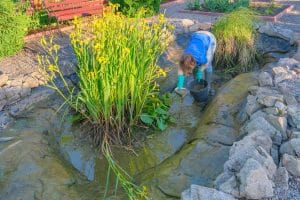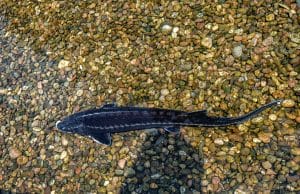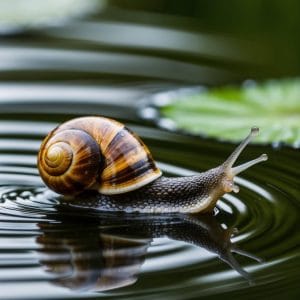Mosquito Control: Stop Mosquitoes in Your Backyard Pond Effectively
Mosquitoes can quickly turn our peaceful backyard ponds into breeding grounds for irritation and disease.
To effectively stop mosquitoes in our backyard ponds, we need to understand their breeding habits and implement various control strategies.
A little effort can greatly improve our outdoor experience and reduce the health risks associated with these pests.

By assessing our pond environment and adopting natural solutions, we can create a balanced ecosystem that deters mosquitoes.
Simple actions like introducing specific fish species or integrating native plants can make a significant difference.
Maintaining a well-cared-for pond is essential in ensuring it does not inadvertently attract these unwanted guests.
Taking the right steps towards mosquito control will not only enhance our enjoyment of outdoor spaces but will also promote a healthier environment for all.
Let’s explore the methods we can use to keep our ponds mosquito-free.
Key Takeaways
- Assessing our pond environment helps identify mosquito breeding spots.
- Introducing natural predators is an effective way to control larval populations.
- Regular maintenance is crucial to keep our ponds healthy and mosquito-free.
Understanding Mosquito Breeding in Ponds
Mosquito breeding occurs primarily in stagnant or standing water.
By understanding how mosquitoes reproduce and what conditions favour their proliferation, we can take effective steps to control their population in our ponds.
Lifecycle of Mosquitoes
Mosquitoes undergo four distinct stages: egg, larva, pupa, and adult.
The life cycle begins when a female mosquito lays her eggs on the surface of stagnant water. These eggs hatch into larvae within a few days.
The larvae thrive in water, feeding on organic matter and microorganisms.
They grow and transform into pupae, where they undergo metamorphosis. This stage lasts about two days, after which adult mosquitoes emerge.
The entire cycle can be completed in as little as one week, especially in warm conditions. This rapid reproduction means even a small amount of standing water can lead to a significant increase in the mosquito population.
Conditions Favouring Mosquito Proliferation
Certain conditions encourage mosquitoes to breed effectively in our ponds.
Stagnant water is the primary requirement. Areas with little to no movement, such as puddles or slow-moving streams, become prime breeding grounds.
In addition to stagnant water, warmer temperatures accelerate development.
Mosquito larvae thrive in temperatures between 20°C and 30°C. As organic matter accumulates in ponds, it provides essential nutrients for the larvae.
We should also consider nearby vegetation. Dense plants near the water offer shelter for adult mosquitoes, allowing them to lay eggs in safety.
Creating an environment that disrupts these conditions can significantly reduce mosquito populations in our ponds.
Assessing Your Pond Environment
To effectively control mosquitoes in our backyard pond, we need to assess the pond environment carefully. Understanding where mosquitoes can breed and ensuring the overall health of the pond ecosystem are crucial steps.
Identifying Areas with Stagnant Water
Mosquitoes prefer stagnant water for breeding. We should walk around the pond and check for areas where water does not flow or move.
Common spots to check include:
- Puddles near the pond’s edge
- Low-lying areas that retain rainwater
- Cracks or depressions in the pond banks
By identifying these spots, we can take action to prevent mosquito larvae from developing.
Creating movement in the water can help.
This can be achieved by using fountains or aerators to keep the water flowing and discourage mosquitoes from laying eggs.
Pond Health Check
Healthy water quality is vital for a thriving ecosystem. We should regularly test the pond’s water for clarity, pH balance, and nutrient levels.
Key factors to monitor include:
- Clarity: Clear water usually indicates a healthy pond. Cloudy water can signal issues.
- pH level: Ideal pH ranges from 6.5 to 8.5. Using testing kits will help us maintain balance.
- Nutrient load: Excessive nutrients, especially nitrogen and phosphorus, can lead to algae blooms, which are unhealthy for our pond.
Maintaining a balanced ecosystem helps control mosquito populations by fostering natural predators, like fish and birds.
Keeping our pond healthy not only reduces mosquitoes but also enhances our garden pond’s beauty and functionality.
Strategies for Mosquito Population Control
Addressing mosquito populations in our backyard pond involves specific strategies that can effectively reduce their numbers. We can utilise both biological and chemical control methods to manage these pests effectively.
Biological Control Methods
We can introduce natural predators to help control mosquito populations.
Fish like the Gambusia affinis, commonly known as mosquito fish, eat mosquito larvae and are effective in ponds.
Another option is using beneficial insects, such as dragonflies.
Their presence can significantly reduce adult mosquito populations as they feed on both larvae and adults.
Additionally, we should maintain a clean environment.
This includes removing debris and ensuring proper water circulation, which discourages mosquito breeding areas.
Chemical Control Approaches
Chemical treatments can also be effective in managing mosquitoes.
We can use larvicides, which specifically target mosquito larvae, preventing them from maturing into adults.
Products like mosquito dunks contain the bacterium Bacillus thuringiensis israelensis (BTI), which is safe for other wildlife and humans.
When applied according to instructions, these treatments can drastically reduce the mature mosquito population in our pond.
It is essential to follow usage guidelines to ensure safety and effectiveness.
Introducing Natural Predators to the Pond
Introducing natural predators to our backyard pond can significantly help control mosquito populations. By encouraging these species to thrive, we create a more balanced ecosystem that reduces the need for chemical treatments.
Benefits of Mosquito Fish
One effective way to manage mosquito larvae is by introducing mosquito-eating fish.
Species like guppies, goldfish, and minnows can consume large amounts of larvae before they hatch into adults.
- Rapid Breeding: Mosquito fish breed quickly, ensuring a steady population that keeps larvae in check.
- Low Maintenance: These fish require minimal care and can adapt well to our pond environment.
- Natural Solution: By not relying on chemicals, we maintain the health of our pond ecosystem, benefiting other aquatic life.
Integrating these fish into our pond can effectively reduce the mosquito population without disrupting the environment.
Attracting Insectivorous Birds
Encouraging insectivorous birds can also be beneficial for managing mosquito populations.
Birds such as swallows, purple martins, and sparrows can consume adult mosquitoes and help control their numbers.
- Habitat Creation: We can create a welcoming environment for these birds by providing nesting sites, like birdhouses and natural perches nearby.
- Food Sources: Planting native flowers and shrubs can attract insects, making our pond more appealing to these birds.
- Biodiversity: Having more bird species around enhances biodiversity and supports a healthier ecosystem.
By fostering this natural predator presence, we can help keep our pond enjoyable and mosquito-free.
The Role of Aeration in Mosquito Control
Aeration plays a crucial role in controlling mosquito populations in our backyard ponds. By promoting water movement and reducing stagnant areas, we can create an environment less conducive to mosquito breeding.
Types of Aeration Systems
There are several types of aeration systems we can choose from to enhance our pond’s water quality.
Fountains are popular for their dual purpose: they aerate the water while also adding aesthetic appeal. They create surface agitation, which helps increase oxygen levels.
Diffuser systems are another effective option. They release fine bubbles at the pond’s bottom, allowing oxygen to rise throughout the water column. This method efficiently circulates water and can reach deeper areas.
Surface aerators work by churning the upper layer of water, ensuring that even the topmost regions are well-oxygenated.
Each system has its benefits, and selecting the right one depends on our pond’s size and specific needs.
Effective Water Circulation
Effective water circulation is key to preventing mosquito larvae from thriving.
Mosquitoes prefer stagnant water for laying their eggs. By implementing an aeration system, we can reduce these still areas.
Maintaining a consistent water flow discourages mosquitoes from settling.
Regularly removing debris, like fallen leaves, also decreases stagnation.
Aerated ponds not only lessen mosquito populations but also enhance overall biodiversity.
This balance contributes to a healthier ecosystem in our backyard.
By ensuring proper circulation, we create a less hospitable environment for these pests.
Integrating Plants and Wildlife for Balance
To effectively manage mosquitoes in our backyard pond, we can leverage nature’s capabilities. By using specific plants and encouraging wildlife, we create a balanced environment that naturally controls mosquito populations.
Choosing Mosquito-Repellent Flora
Selecting the right plants is key to deterring mosquitoes.
Some effective choices include marigolds and lavender. These flowers contain natural compounds that repel mosquitoes.
- Marigolds: Known for their vibrant colour, marigolds release a scent that mosquitoes find unappealing.
- Lavender: This aromatic plant not only smells delightful to us but acts as a natural deterrent against pest insects.
Incorporating these plants around the pond can create barriers that help keep mosquitoes away while enhancing our garden’s beauty.
We should also consider other options, like citronella and basil, which are also known for their repellent properties.
A diverse selection of mosquito-repellent plants enriches our pond’s ecosystem and supports other beneficial insects.
Maintaining Ecosystem Diversity
Encouraging a varied ecosystem helps us control mosquitoes naturally. Introducing wildlife, such as guppies, is a fantastic strategy.
These small fish feast on mosquito larvae, significantly reducing their numbers in the water.
In addition to fish, we should ensure that our pond includes plants that support wildlife. Native plants provide shelter and food for birds, dragonflies, and other predators that help keep mosquito populations low.
By creating habitats for these creatures, we foster a balanced setup where predators help manage the mosquito lifecycle. This approach promotes a lively and healthy pond environment for all.
Integrating these elements effectively turns our backyard pond into a harmonious ecosystem that naturally controls mosquito activity.
Implementing Mechanical Interventions
To maintain a mosquito-free backyard pond, we can implement specific mechanical interventions. By using pumps and skimmers, we can significantly reduce mosquito breeding areas and keep our pond clean and healthy.
Installing and Maintaining Pumps
Installing a pond pump is crucial for water circulation. It helps to move water continuously, preventing stagnant areas where mosquitoes lay their eggs.
We can choose a pump that fits the size of our pond and ensure it provides adequate flow rate.
Regular maintenance of our pump is essential. We should check the pump for clogs, clean filters, and ensure it operates efficiently.
Incorporating features like a waterfall can enhance our pond’s aesthetics while promoting oxygenation. This added aeration makes the environment less favourable for mosquito larvae, reducing their population.
Utilising Skimmers for Cleanup
Pond skimmers are effective for removing debris from the water’s surface. They help to catch leaves, twigs, and other organic material that might decompose and create stagnant areas.
By keeping the water clear, we discourage mosquitoes from laying eggs.
When using a skimmer, we must ensure proper placement for maximum efficiency. It’s also important to regularly empty the skimmer to prevent build-up and keep our pond clean.
This proactive approach contributes to a healthier ecosystem, making our pond less appealing to mosquitoes.
The Importance of Regular Pond Maintenance
Regular maintenance of our pond plays a crucial role in preventing mosquito breeding and ensuring a healthy aquatic environment. By keeping up with routine inspections and promptly addressing any issues, we can significantly enhance the enjoyment of our garden ponds.
Routine Inspections
We should carry out regular inspections of our pond at least once a week. This allows us to check for stagnant water, which is a prime breeding ground for mosquitoes.
During these checks, we can observe water flow and ensure that it is adequate.
If we notice areas of still water, we can make adjustments by adding aerators or fountains. These features increase circulation and can greatly reduce places where mosquitoes might lay eggs.
In addition to checking for stagnant areas, we will look for signs of algae or excessive vegetation. We need to monitor these carefully as they can contribute to poor water quality and attract mosquitoes.
Cleaning and Debris Removal
Cleaning our pond is essential for maintaining a healthy ecosystem. We should remove any debris, such as fallen leaves and twigs, that can accumulate and create favourable conditions for mosquitoes.
We can use a net or scoop to regularly clear debris from the water’s surface. This not only helps prevent mosquito breeding but also promotes better water flow, which is crucial for maintaining oxygen levels in the pond.
Additionally, we need to clean the edges of the pond as well, removing any plants that are overgrowing.
By keeping the pond tidy, we foster a balanced environment that discourages mosquito populations and enhances the beauty of our garden ponds.
Using Fish to Target Mosquito Larvae
In managing mosquito control in our backyard pond, introducing certain species of fish can be a highly effective approach. These fish not only help in keeping mosquito larvae at bay but also contribute to a balanced ecosystem.
Selection of Mosquito-Eating Fish
When choosing fish for our ponds, we should select species known for their appetite for mosquito larvae. Some of the best options include:
Mosquito Fish (Gambusia spp.): These small fish are extremely efficient at consuming mosquito larvae. They thrive in various water conditions and can reproduce quickly, ensuring a steady population.
Guppies: Guppies are not only colourful but also effective. They eat mosquito larvae and can survive in ponds with both fresh and saltwater.
Minnows: Species like rosy reds are excellent for controlling mosquito populations. They can tolerate varying temperatures and provide additional food sources for larger fish.
With these selections, we can create a natural solution to combat mosquito issues in our pond.
Fish as a Natural Larvicide
Using fish as a natural larvicide offers a safe method to kill mosquito larvae without chemicals. Fish consume large numbers of larvae, significantly reducing their population in our pond.
Feeding Habits: Many of these fish eat mosquito larvae at different stages of development. Their constant feeding helps keep the larvae under control.
Ecosystem Benefits: By introducing these fish, we also support biodiversity. They help maintain a balanced ecosystem, which can contribute to reducing mosquito breeding.
Longevity: Once established, fish populations will naturally reproduce. This means we won’t have to replace them frequently, making this a sustainable option for pond mosquito control.
Optimising Pond Features for Mosquito Deterrence
To effectively reduce mosquito activity, we can enhance our pond’s features by adding water movement elements and considering thoughtful landscape design. These strategies will not only deter mosquitoes but also create a more attractive environment.
Incorporating Water Movement Elements
Adding movement to our pond is crucial. Mosquitoes prefer stagnant water for breeding.
By introducing elements such as fountains or waterfalls, we create ripples that disrupt the surface. This makes it harder for mosquitoes to lay their eggs.
Fountains can be a great focal point. They come in various styles, allowing us to choose one that fits our landscape design. Waterfalls also add beauty and create a soothing sound.
Both features can help maintain the water’s oxygen levels, benefiting fish and plants while making the pond less appealing to mosquitoes. A gentle flow keeps the water fresh and reduces algae, which can serve as a breeding ground.
Design Considerations for Prevention
When designing our pond, we should focus on specific features that discourage mosquito breeding.
First, avoid creating deep, still areas where water can collect. Shallow zones expose larvae to predators.
Integrating aquatic plants can be beneficial.
Plants like water lilies provide shade and habitat for fish that eat mosquito larvae.
We should also plan for adequate drainage around the pond to prevent water pooling.
Implementing a variety of edges like rocks or gravel can help break up stagnant areas.
By incorporating these elements into our landscape design, we enhance the aesthetics of our pond while effectively reducing potential mosquito breeding sites.
Related Posts
- Mastering Backgarden Elegance: A Guide to Pondless Waterfalls
- How To Best Find And Fix Pond Leaks Quickly: Effective Solutions for Immediate Results
- How to Repair a Cracked or Leaking Concrete Pond or Fish Pond: Quick and Effective Solutions
- Spring Pond Prep: Essential Checklist for a Thriving Summer Environment



